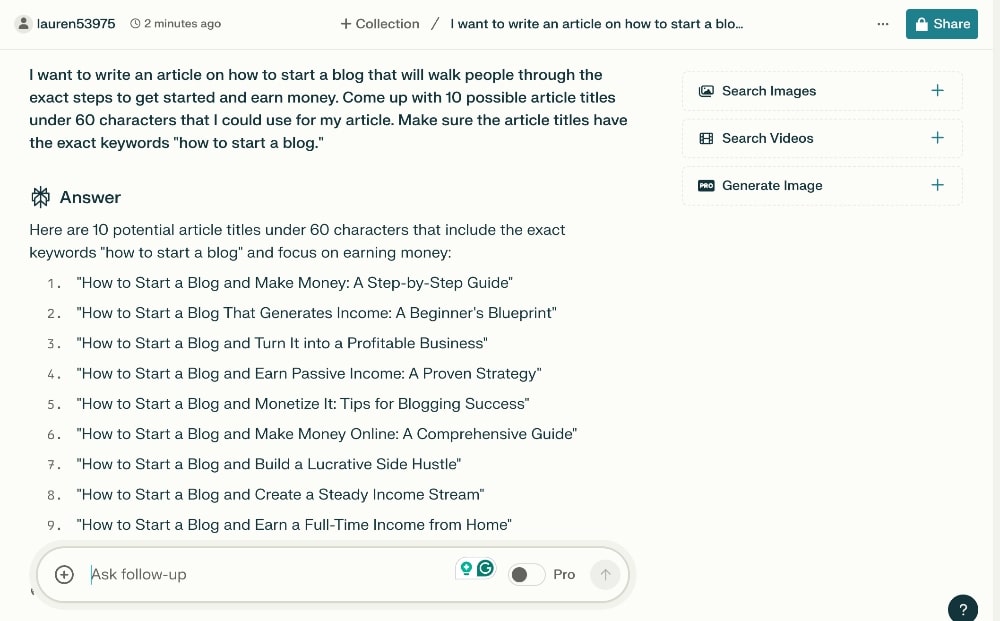Ever felt like your creative well has run dry? We’ve all been there – staring at a blank page, willing brilliant ideas to magically appear.
But here’s the good news: creativity isn’t some mystical gift bestowed upon a chosen few. It’s a skill that can be nurtured and developed, just like any other.
Whether you’re an artist facing a stubborn creative block, a professional looking to innovate at work, or simply someone who wants to add a spark of imagination to everyday life, anyone can learn how to be more creative.
You’ve probably heard the phrase, “great minds think alike,” but have you heard the phrase, “creative minds think alike?”
In this article, we’re going to explore:
- What creativity is
- How to create and foster a more creative mindset
- 14 ways that you can be more creative
Trust me, by the time we’re done, you’ll be bursting with fresh ideas and ready to tackle any creative challenge that comes your way!
What is Creativity?
Creativity is often misunderstood as a mystical talent possessed only by artists, writers, and inventors. In reality, it’s a fundamental human capacity that we all share.
At its core, creativity is the ability to generate novel and valuable ideas, solutions, or expressions.
Creativity isn’t just about producing art or coming up with groundbreaking inventions. It’s a way of thinking that can be applied to any aspect of life, from problem-solving at work to finding innovative ways to manage your household budget.
It’s about seeing connections where others don’t, questioning established norms, and imagining new possibilities.
Key aspects of creativity include:
- Originality: Generating ideas that are unique or unexpected.
- Flexibility: The capacity to adapt and change perspectives.
- Fluency: The ability to produce a large number of ideas.
- Elaboration: Developing and expanding on ideas.
Importantly, creativity isn’t a fixed trait. It’s a skill that can be developed and enhanced through practice and the right mindset.
Everyone has the potential to be creative, and like any skill, the more you exercise your creative muscles, the stronger they become.
By understanding what creativity truly is and actively working to cultivate it, you can unlock new potential in both your personal and professional life.
Cultivate a Creative Mindset
The key to unlocking your creativity lies in the foundation of all creativity: your mindset.
Having an open mind creates the space for innovative thinking and will make the strategies that we cover to develop creativity a lot more effective.
Here are three key ways to cultivate a mindset that inspires creative thinking:
1. Embrace Curiosity
Remember when you were a kid, and everything seemed fascinating? That’s the spirit we’re aiming for here.
Curiosity is the fuel that powers creativity. It prompts you to question existing paradigms and explore new possibilities.
Start asking “What if?” and “Why not?” more often.
Look at everyday objects and situations with fresh eyes. Wonder about how things work, why they are the way they are, and how they could be different.
This childlike curiosity can lead to unexpected connections, novel ideas, and unconventional problem-solving strategies.
2. Practice Open-Mindedness
Creativity thrives when we’re open to new experiences and diverse perspectives.
Here are a few ways to cultivate a more open-minded mindset:
- Actively seek out viewpoints that challenge your assumptions and preconceptions
- Consider ideas that seem outlandish at first and suspend judgment on them
- Engage in thought experiments that push the boundaries of conventional thinking
Try this: next time you’re faced with a problem, come up with at least three possible solutions – including one that seems totally wild.
You might be surprised at how often the “crazy” idea leads to innovative breakthroughs!
3. Overcome Fear of Failure
Here’s a little secret: even the most creative geniuses have bad ideas sometimes. The difference is, they don’t let the fear of failure stop them from exploring those ideas.
Embrace the concept of “failing forward” – view each misstep as a learning opportunity rather than a setback.
Remember, every “failed” attempt brings you one step closer to a brilliant solution.
By adopting this approach, you can create an environment where creative risks are encouraged and setbacks are viewed as stepping stones to success.
These mindset shifts may feel uncomfortable at first, but try to stick with it. This will lay the groundwork for a more creative you.
14 Simple Ways to Be More Creative
Becoming a more creative person is a skill accessible to everyone, not just a select few with innate talent.
The following strategies offer a practical roadmap to get your creative juices flowing, blending mindset shifts with actionable techniques.
1. Use Mind Mapping
Mind mapping is a powerful visual technique that can significantly boost your creative thinking.
It’s a method that helps you organize your thoughts, explore connections between ideas, and generate new concepts in a non-linear way.
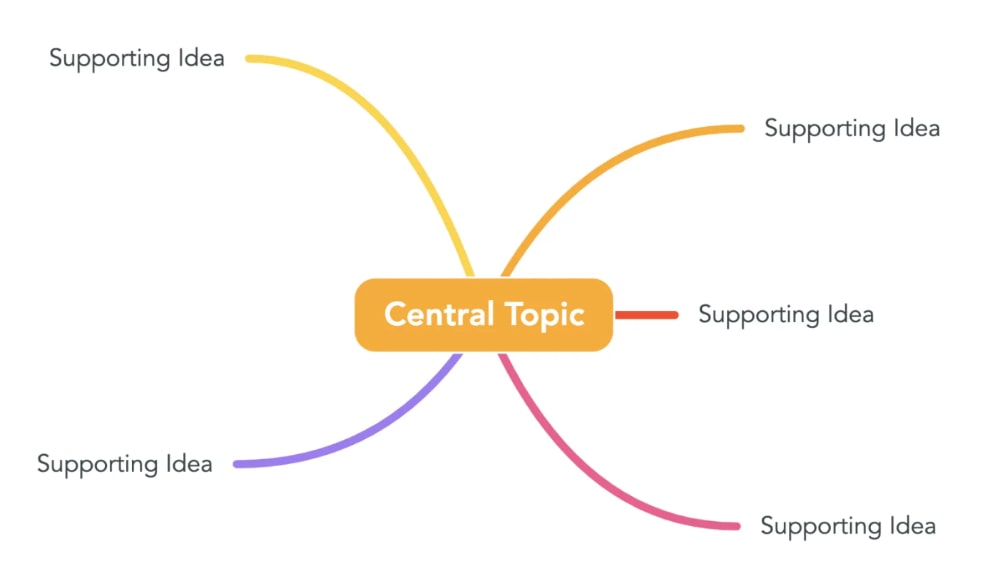
Mind mapping can be particularly useful for:
- Brainstorming new project ideas
- Planning and organizing complex tasks
- Solving problems by visualizing all aspects
- Taking notes in a more engaging and memorable way
- Exploring and expanding on a central theme or concept
You can create mind maps using pen and paper, or try one of the many digital mind-mapping tools available.
Here’s how to get started with mind mapping:
- Begin with a central idea or topic in the middle of a blank page.
- Branch out from this central point with related subtopics or concepts.
- Continue branching out with more detailed ideas or associations.
- Use colors, symbols, and images to make your map more visually engaging and memorable.
There is no “right” way to create a mind map. The goal is to let your thoughts flow freely and make connections you might not have seen before.
2. Use AI for Inspiration
I know what you’re thinking… AI tools, really? Most people think that AI is killing creativity, but hear me out.
AI is perhaps THE most powerful tool out there to help you generate new ideas and boost creativity – when used properly.
The problem is that many people are using AI to try to do the creative work for them. This can kill creativity.
The best way to use AI tools to boost creativity is to use it to help you generate and explore new ideas and perspectives – not use it as a replacement to do the work.
AI can be an excellent source of inspiration when you’re feeling stuck or need a fresh perspective.
Here’s how to effectively use AI to jumpstart your creativity:
- Idea generation: Use AI to brainstorm initial concepts. For example, you might ask an AI tool to generate a list of potential themes for a story or possible solutions to a problem.
- Exploring different angles: Ask AI to approach a topic from various perspectives. This can help you break out of your usual thought patterns.
- Expanding on concepts: Once you have a basic idea, use AI to suggest related concepts or elaborate on specific aspects.
- Overcoming creative blocks: When you’re stuck, AI can provide random prompts or suggestions that might trigger new thoughts.
Remember, the key is to use AI-generated content as a starting point, not an end result.
Think of it as a creative collaborator that can help stimulate your own thinking.
The most valuable ideas will come from how you interpret, combine, or build upon the AI’s suggestions.
3. Change Your Environment
Your surroundings play a crucial role in shaping your thoughts and influencing your creativity. Sometimes, all it takes to spark the best ideas is a change of scenery.
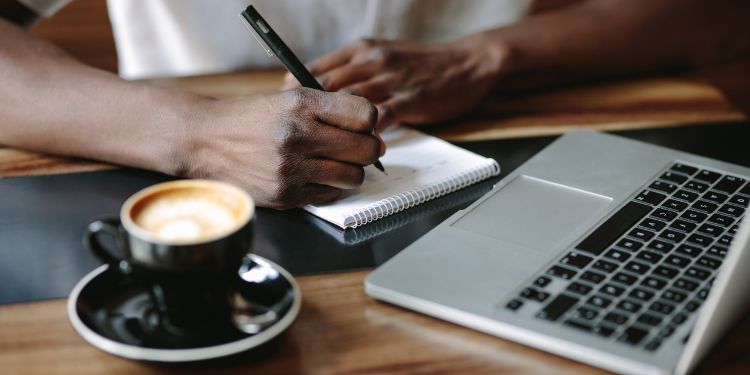
Here’s why changing your environment can help you be a more creative person:
- Fresh perspectives: A new environment can literally change your point of view, helping you see things differently and think in new ways.
- Reduced mental ruts: Familiar surroundings can lead to habitual thinking. A change can disrupt these patterns and encourage novel thoughts.
- Sensory stimulation: New sights, sounds, and smells can awaken your senses and inspire fresh ideas.
- Increased focus: A change of environment can help you escape distractions and concentrate on creative tasks.
The cool thing is, the change doesn’t have to be dramatic to be effective. Even small alterations to your environment can lead to significant shifts in your thinking and creativity.
Here are some practical ways to change your environment:
- Work from a different location: Try a café, library, or co-working space instead of your usual desk.
- Rearrange your workspace: Even small changes like moving furniture or adding plants can make a difference.
- Get outdoors: Nature can be incredibly inspiring. Take a walk in a park or work in a garden.
- Travel: If possible, visit new places, even if it’s just a nearby town you’ve never explored.
- Alter your sensory input: Change the lighting, play different background music, or use essential oils to create a new atmosphere.
Pay attention to how different settings affect your mood and thought processes. You might discover that certain types of environments are particularly conducive to your creative work.
Use this knowledge to create an optimal setting for your creative pursuits.
4. Take Tips from the Experts
When it comes to enhancing creativity, learning from those who have mastered the craft can be incredibly valuable. Let’s explore some insights from renowned experts in the field:
From “Deep Work” by Cal Newport:
Newport emphasizes the importance of focused, distraction-free work for creative output.
He suggests creating dedicated time blocks for deep, concentrated work on creative projects, free from interruptions like emails or social media.
This allows your mind to fully engage with complex ideas and foster innovative thinking.
From “The Artist’s Way” by Julia Cameron:
Cameron introduces the concept of “morning pages” – a practice of writing three pages of stream-of-consciousness thoughts each morning.
This exercise helps clear your mind, process emotions, and unlock creativity by bypassing your inner critic. It’s a way to tap into your subconscious and uncover new ideas.
From “The Creative Act” by Rick Rubin:
Rubin highlights the importance of connecting with nature to enhance creativity.
He suggests that deepening our connection with the natural world can serve our spirit and, in turn, boost our artistic output.
This could involve taking walks in nature, working outdoors, or simply observing the natural world around you.
Other highly popular books on creativity include:
5. Practice Free Writing
Free writing is a powerful technique that can unlock your creativity and help you come up with fresh, great ideas, improve your focus, and even reduce stress.
It’s a simple yet effective method that involves writing continuously for a set period without worrying about grammar, spelling, or even coherence.
The goal of free writing is not to produce a finished piece, but to tap into your subconscious and unleash your creativity.
Here’s how to practice free writing:
- Set a timer: Start with 10-15 minutes and gradually increase as you get more comfortable.
- Choose a prompt or start with a blank page: You can begin with a specific topic or just write whatever comes to mind.
- Write continuously: Don’t stop writing until the timer goes off. If you can’t think of anything, write “I can’t think of anything” until new ideas emerge.
- Don’t edit or censor: Let your thoughts flow freely without judgment. This is not the time for perfectionism.
- Review later: After you’re done, read what you’ve written. You might be surprised by the ideas that have emerged.
Try incorporating free writing into your daily routine, perhaps as a morning exercise to start your day with a burst of creativity.
Don’t worry if what you write seems nonsensical or unrelated to your project – often, the most valuable insights come from unexpected places.
6. Keep a Journal or Notebook
Keeping a journal or notebook is another simple yet powerful tool for helping creative people get in the flow.
It serves as a personal space to capture fleeting thoughts, explore ideas, and reflect on experiences.
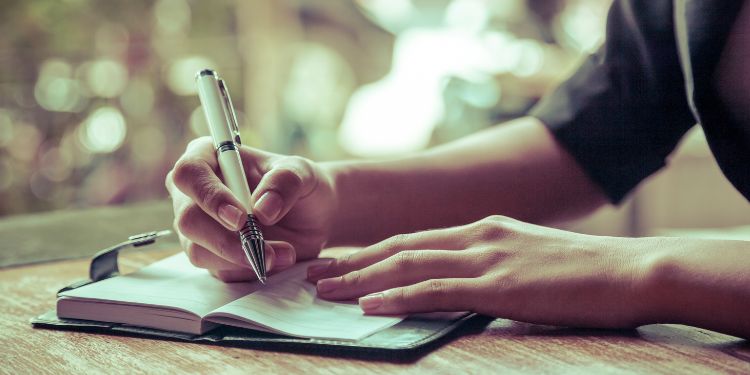
Journaling can help with:
- Idea capture: Jot down ideas as they come to you, preventing them from slipping away.
- Reflection: Process your thoughts and experiences, leading to deeper insights.
- Problem-solving: Work through challenges by writing about them from different angles.
- Inspiration bank: Create a repository of ideas and observations to draw from later.
- Skill development: Regular writing improves your ability to articulate ideas clearly.
There is no right or wrong way to journal. The “best way” is simply to do it regularly, consistently, and honestly.
Make sure to keep your journal or notebook handy, or use an app on your phone if that helps you.
Experiment with different formats (writing, drawing, bullet journaling, etc.)
7. Brainstorm Regularly
Brainstorming is a cornerstone of creative thinking, and making it a regular practice can significantly boost your creative output.
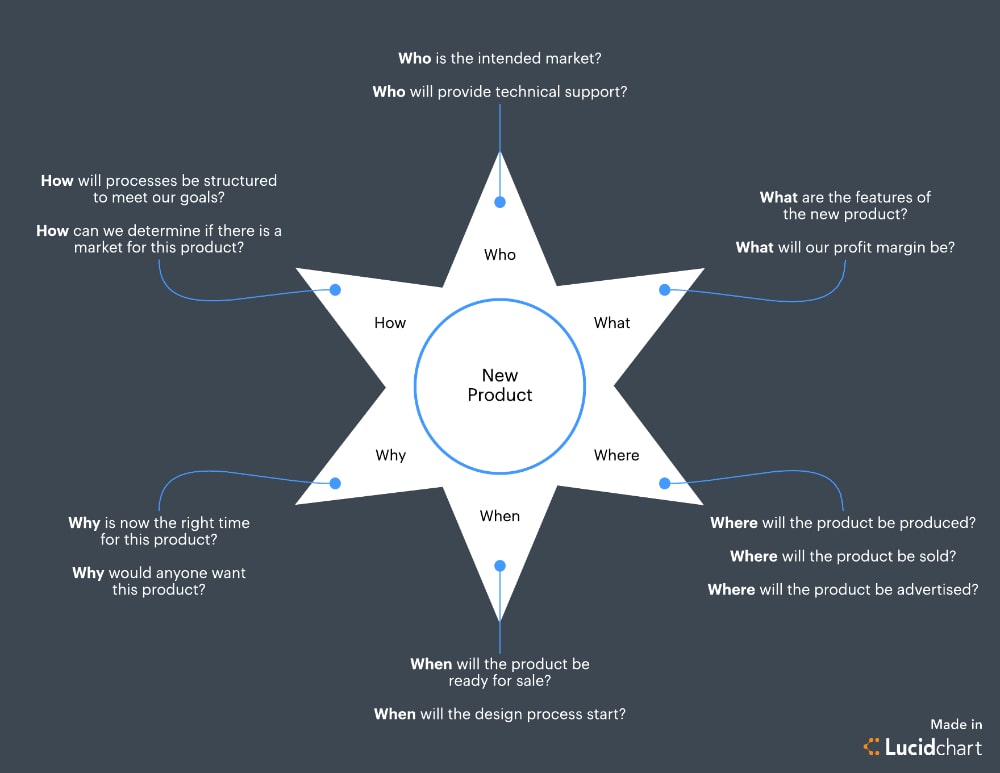
This technique involves generating a large quantity of ideas in a short time, without judgment or criticism.
Here are some tips to get the most out of your brainstorming sessions:
- Set aside dedicated time for it. This could be a weekly session or even a daily 10-minute idea generation sprint. The key is consistency.
- Focus on quantity over quality. The goal is to produce as many ideas as possible, no matter how wild or impractical they might seem. Often, it’s the seemingly outlandish ideas that lead to innovative solutions when refined later.
- Create an environment conducive to free thinking. This might mean finding a quiet space, using colorful sticky notes, or even standing up and moving around. Some people find that brainstorming in a group can be particularly effective, as it allows for building on each other’s ideas.
- Don’t limit brainstorming to when you’re facing a specific problem. Regular brainstorming on random topics or hypothetical scenarios can help keep your creative muscles flexed and ready for when you need them most.
- Remember to record all your ideas during these sessions. You never know when a seemingly useless idea might become the seed for something brilliant down the line.
After your brainstorming session, give yourself some time before evaluating the ideas. This allows your subconscious mind to continue working on them and can lead to even more insights.
By making brainstorming a regular habit, you’re training your brain to think more creatively and generate ideas more readily.
Over time, you’ll likely find that creative solutions come to you more easily, even outside of your dedicated brainstorming sessions.
8. Learn a New Skill or Hobby
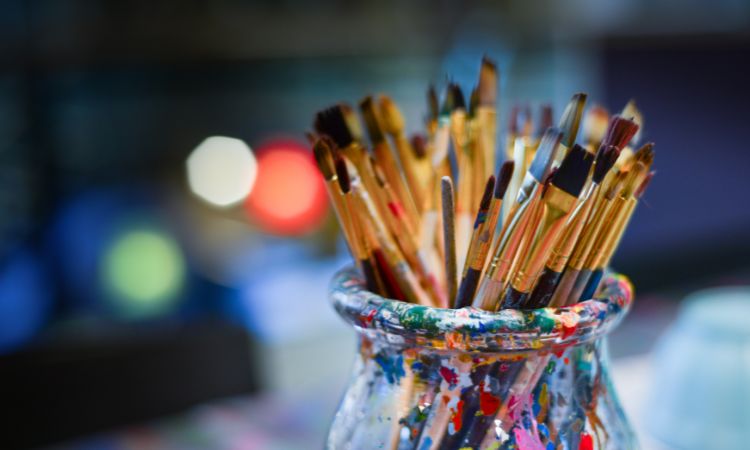
Another great way to learn how to be more creative is to expand your skills.
Learning something new challenges your brain, creates fresh neural pathways, and often provides unexpected inspiration for your primary creative pursuits.
Choose a skill or hobby that’s different from your usual activities. If you’re a writer, try painting. If you’re a musician, experiment with coding.
The goal is to engage different parts of your brain and expose yourself to new ways of thinking.
Start small and be consistent. Dedicate even just 15 minutes a day to your new skill. As you progress, you’ll likely find connections between this new activity and your existing creative work.
Don’t worry about mastery; the learning process itself is what stimulates creativity. Embrace the beginner’s mindset and enjoy the journey of discovery.
9. Dedicate Time for Creativity
In our busy lives, creativity often takes a backseat to more pressing tasks. But to really get your creative juices going, sometimes you need to just set aside dedicated time for it.
Schedule regular “creativity blocks” in your calendar, treating them with the same importance as any other appointment.
These blocks can be daily, weekly, or whatever frequency works best for you — just make sure you’re consistent about it.
During these dedicated times, focus solely on creative activities. Turn off notifications, find a quiet space, and immerse yourself fully in the creative process.
This might involve working on a specific project, experimenting with new ideas, or simply engaging in creative exercises.
Start with shorter sessions if you’re new to this practice. Even 15-30 minutes can be productive. As you build the habit, you can gradually increase the duration.
10. Collaborate With Others
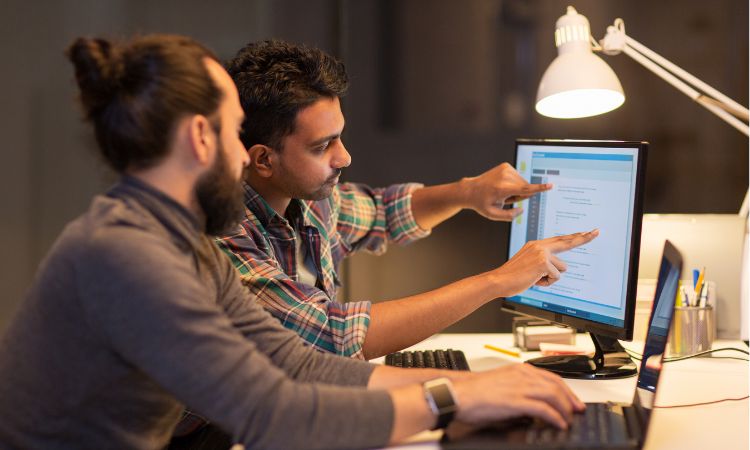
Working with others exposes you to different perspectives, skills, and ideas, often leading to innovative solutions you might not have reached alone.
Seek out opportunities to collaborate with people from diverse backgrounds and disciplines. This could involve joining a creative group, participating in workshops, or initiating joint projects with colleagues or friends.
During collaborations, practice active listening and remain open to new ideas. The goal is to build on each other’s strengths and create something greater than the sum of its parts.
Remember, successful collaboration requires clear communication, mutual respect, and a willingness to compromise.
11. Get Feedback and Constructive Criticism
Actively seeking feedback is crucial for creative growth.
While it can be challenging to hear critiques of your work, constructive criticism offers valuable insights that can help refine and improve your creative output.
When seeking feedback:
- Choose the right people: Seek opinions from those whose judgment you trust and who understand your creative goals.
- Be specific about what you want feedback on: This helps reviewers focus their comments and provides you with more useful input.
- Listen openly: Resist the urge to defend your work immediately. Instead, listen to understand the perspective being offered.
- Ask clarifying questions: Seek specific examples or suggestions for improvement to make the feedback more actionable.
- Reflect before reacting: Take time to process the feedback before deciding how to incorporate it into your work.
Remember, not all feedback will be relevant or helpful. Learn to discern which critiques align with your vision and which you can respectfully disregard.
12. Take Breaks
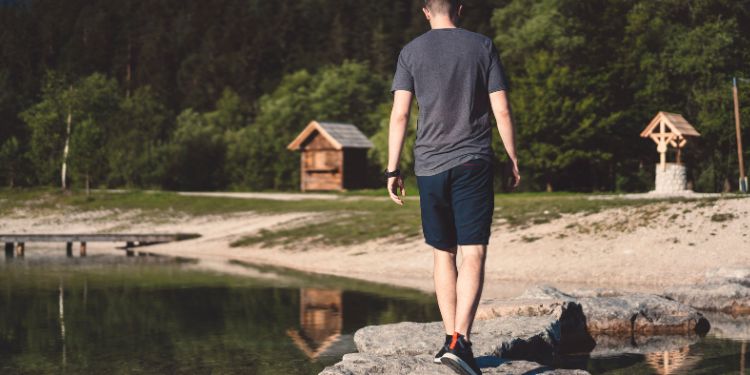
While it might seem counterintuitive, taking regular breaks is essential for maintaining and enhancing creativity.
Constant work without rest can lead to burnout and creative blocks.
Short breaks throughout your work session can help refresh your mind and boost productivity.
The Pomodoro Technique, which involves 25-minute work intervals followed by 5-minute breaks, is a popular method for maintaining focus and creativity.
Longer breaks are equally important.
Step away from your project for a few hours or even days. This allows your subconscious mind to continue processing ideas, often leading to “aha” moments when you return to work.
13. Experiment With Different Artistic Mediums
Exploring various artistic mediums can significantly enhance your creative abilities and provide a new perspective on your efforts.
Step out of your comfort zone and try mediums you’re unfamiliar with. If you’re a writer, experiment with painting. If you’re a musician, try sculpting.
The goal is to engage different parts of your brain and challenge yourself creatively.
Don’t worry about mastery; the act of experimenting itself is valuable. Embrace the beginner’s mindset and enjoy the process of discovery.
14. Exercise Your Body (and Your Mind)
Believe it or not, physical exercise is a powerful creativity booster.
Regular activity enhances cognitive function, improves mood, and stimulates creative thinking.
Aerobic exercises like running or cycling increase brain blood flow, promoting new neural connections. This can improve problem-solving skills and creative output.
Even light activities offer benefits:
- Walking can clear your mind and spark ideas
- Yoga combines physical postures with mindfulness
- Dancing engages both body and mind creatively
- Exercise often serves as active meditation, allowing your mind to make unexpected connections. Many creatives report having their best ideas during or after physical activity.
Mental exercises like solving puzzles, playing strategy games, and learning a new language can also be really helpful.
FAQs About How to Be More Creative
Conclusion
Mastering creativity is a journey, not a destination. By incorporating these strategies into your life, you’re setting the stage for enhanced creative thinking and innovative problem-solving.
Don’t feel pressured to implement all these techniques at once. Start with one or two that resonate with you and gradually incorporate others as you become more comfortable.
The key is consistency and patience.
As you embark on this creative journey, keep in mind that setbacks and moments of doubt are normal.
Embrace them as part of the process. Every creative endeavor, whether successful or not, is an opportunity to learn and grow.
Ultimately, the goal is not just to become more creative in your work or hobbies, but to cultivate a creative mindset that enriches all aspects of your life.
